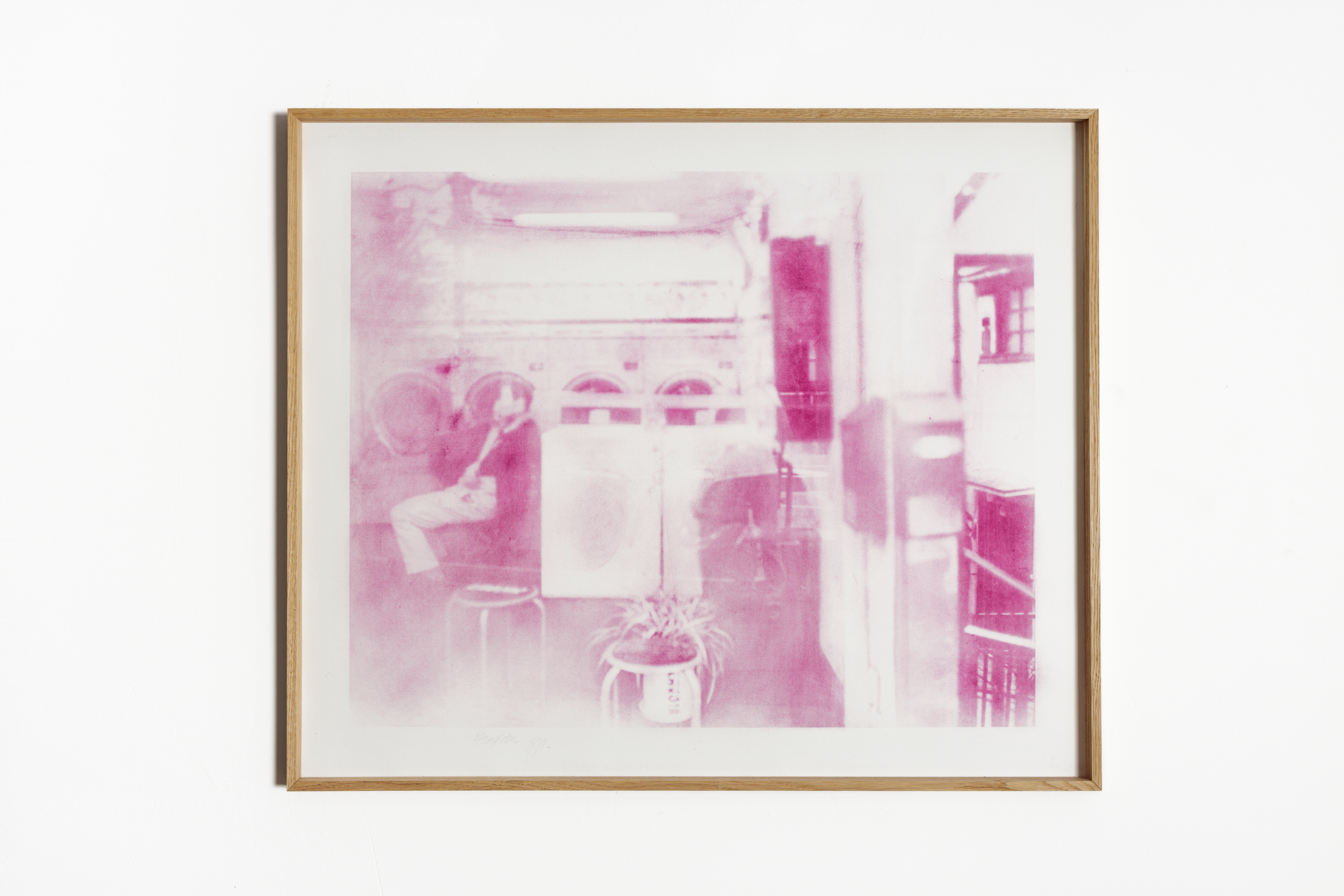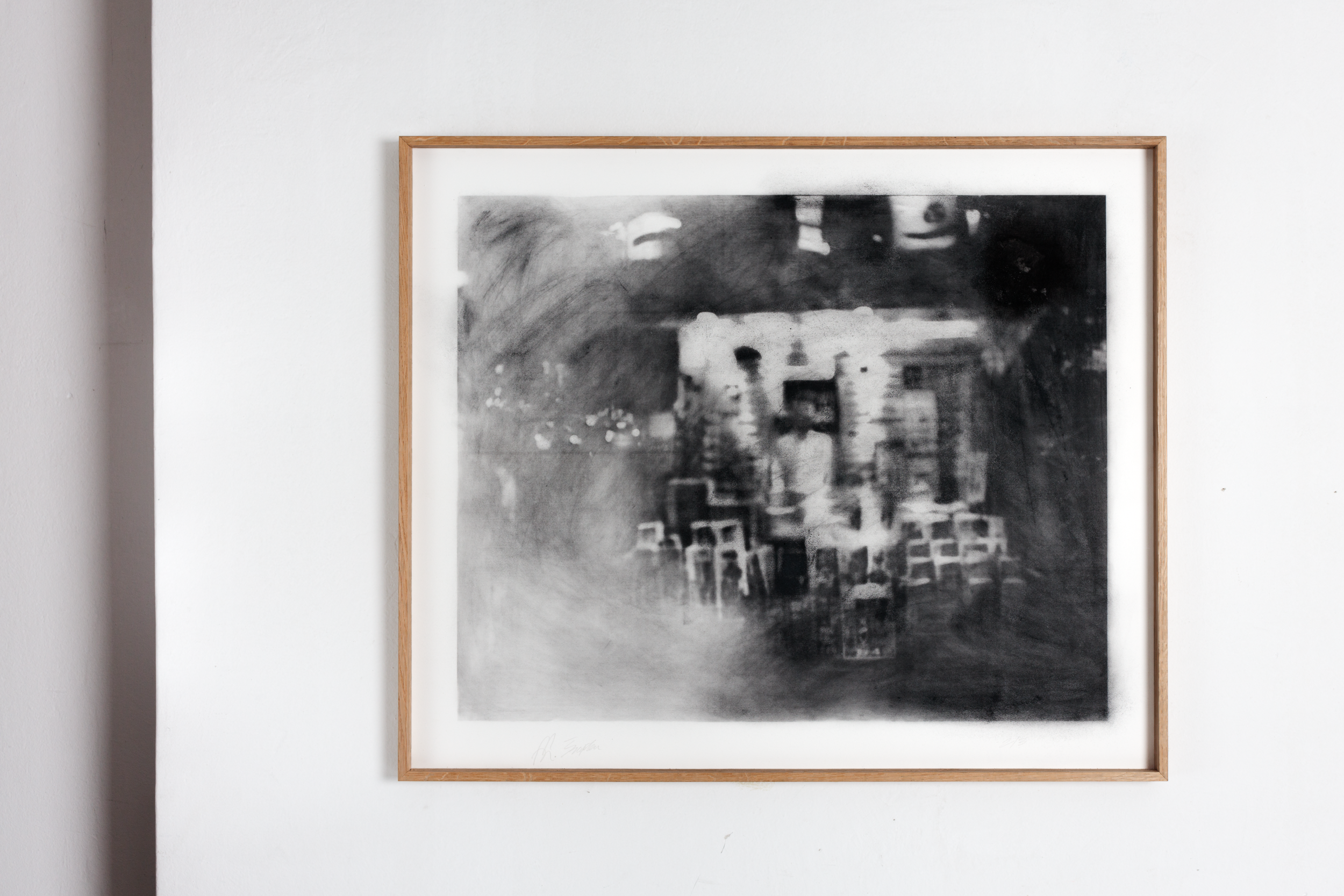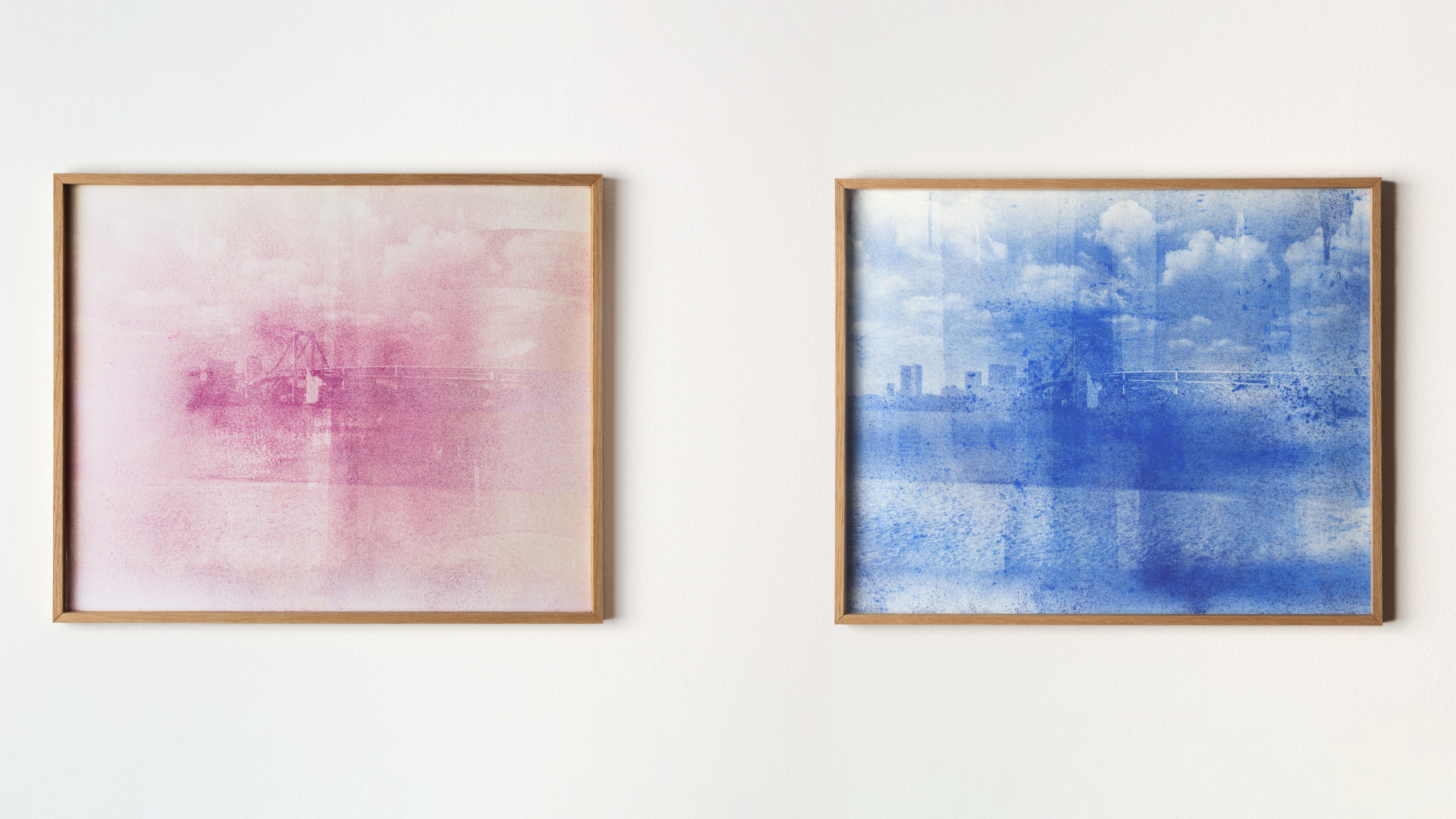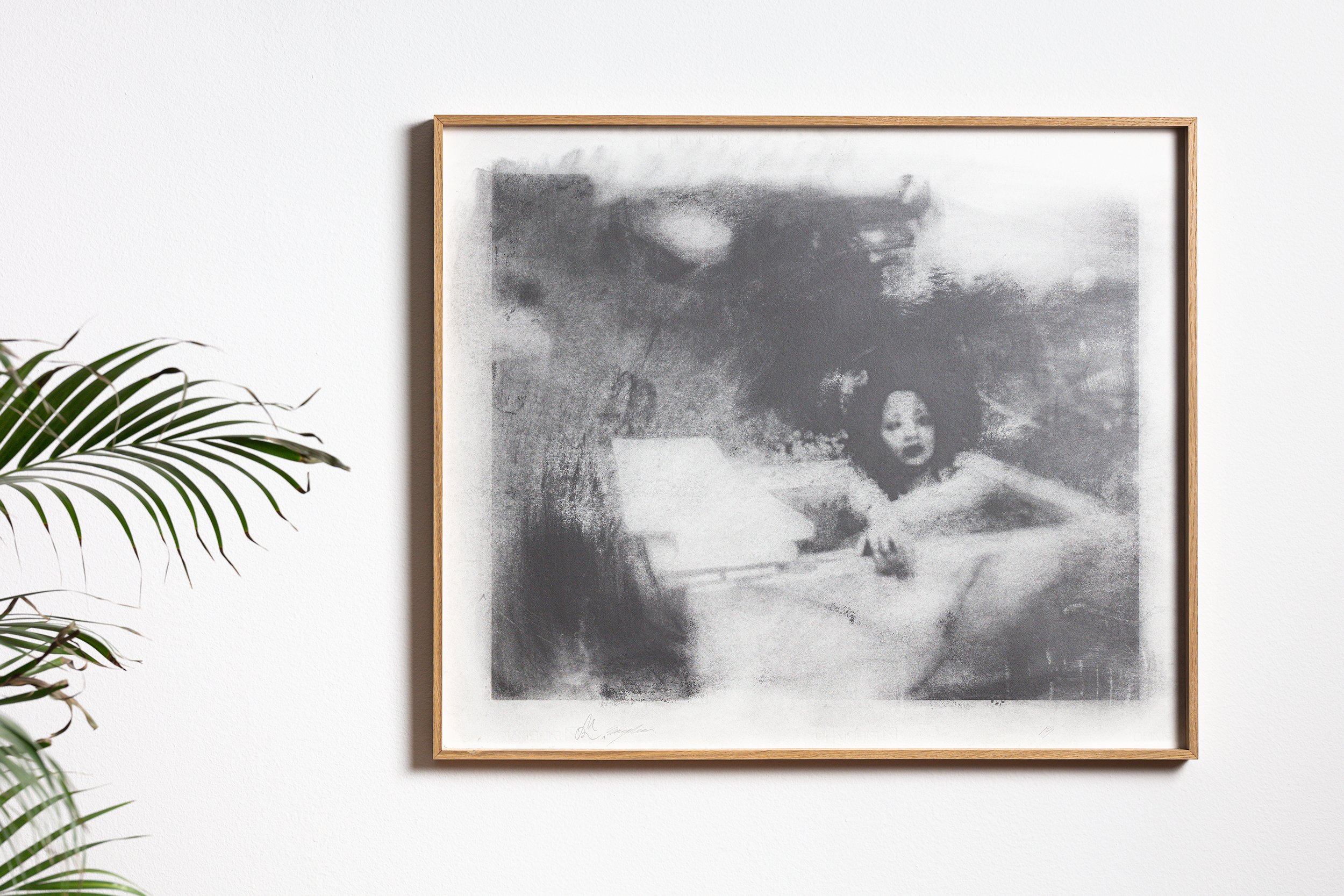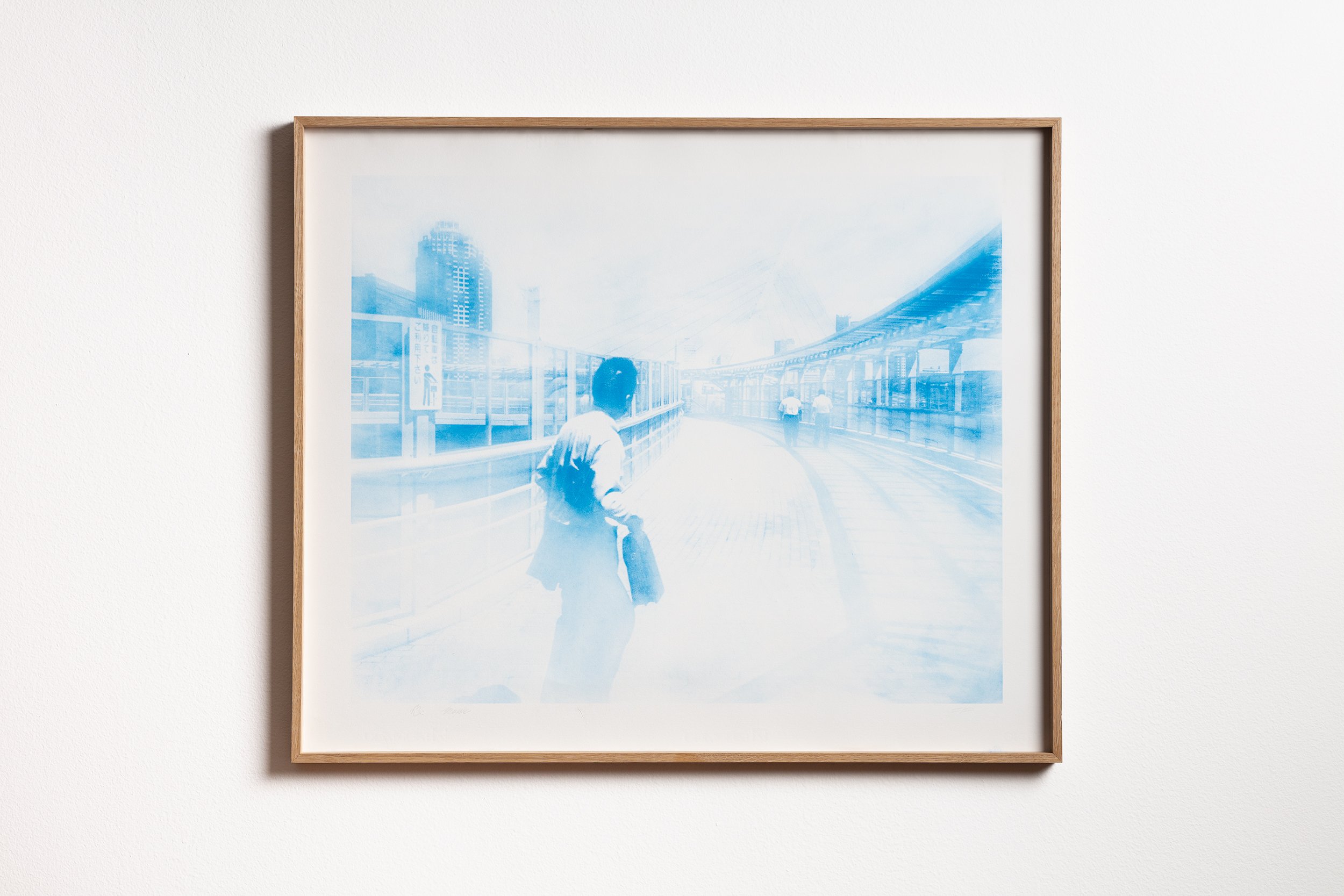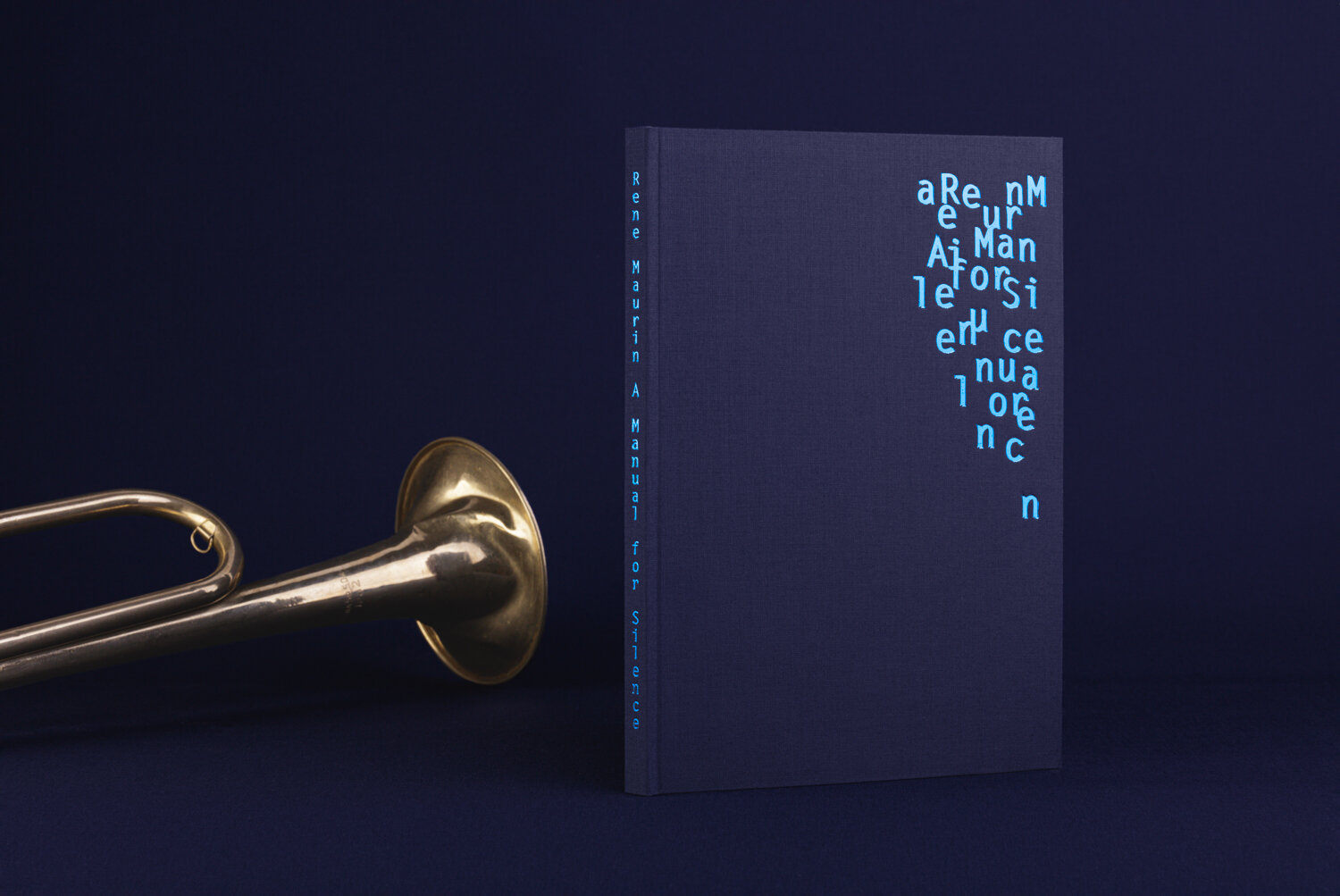Dust of a Summer
Dust of a Summer is a series of dry print monoprints based on photographs from a distant summer in Tokyo.
Dust of a Summer
“In a small room on the ground floor, which was previously a stable for horses and is now full of showcases of armour and muskets, I imagined I heard the sound of a horse blowing through its nostrils. Then I tried to imagine choosing and buying a horse. It must be like owning nothing else.” (Berger, 2015)
Late in 2020, in the midst of the movement restrictions, I came across those few digitised images again. This time I gave them some quiet attention – I began to linger at the sight of them. The disappointment had worn off and my observation of these images had begun to take on a new dimension. More than 5 years have passed since I recorded those images. I no longer saw them as technically failed photographs - their photographic meaning was, after all, relatively unambitious to begin with. My focus began to shift from the external gaze to the internal observation of memory as part of human identity and experience. The images gradually took on the role of an unreliable interlocutor of remembering.
The blurriness - this unplanned defect not only obscured my view of the subject or object itself, but also blatantly proclaimed the impotence of memory and the intangibility of the feelings it was supposed to evoke. It was precisely by this double failure, that these images enabled or even urged the delving into memory as a creation rather than an attempt to reconstruct the facts of an experience.
Nevertheless, photography, even if technically failed, can hardly escape the stubborn stamp of mechanical recording and reproduction. Both the record and the nature of the extraction of the image from the negative find their strength in overcoming the shortcomings of human memory – an apparent mechanical objectivity. To contemplate memory via photographic medium isn’t possible without renouncing standard photographic techniques. This has urged an inquiry in techniques of application and search for what would represent and interpret the foci addressed in the series. A technique that breaks from the mechanical grip of the photographic process – fixity, repeatability and technical precision. The result is “dry print” – a modification of serigraphy developed and refined with Gal Šnajder who is the co-author of the monoprints. These are produced in editions 3+2AP. We chose the name of the technique - "dry print" as it bases on screen printing, but it does not use inks with binders and chemicals, but raw natural pigments such as graphite, iron oxides, earths, indigo and other traditional dyes in their elemental form.

